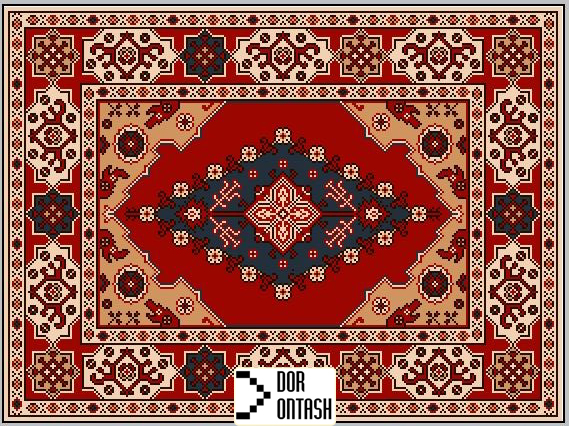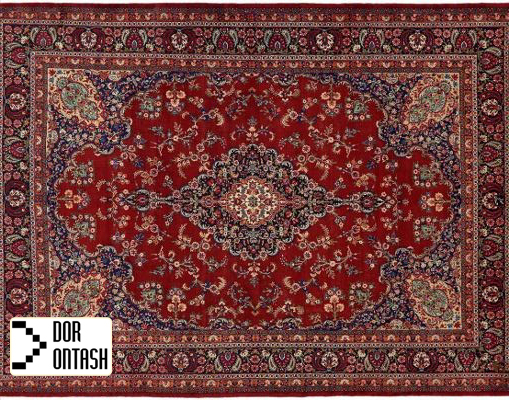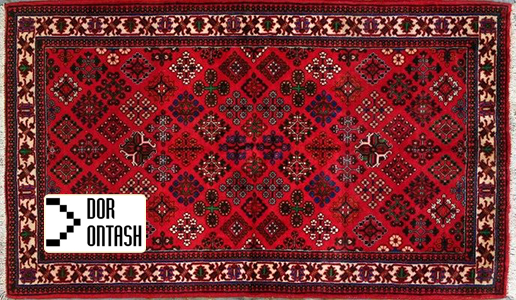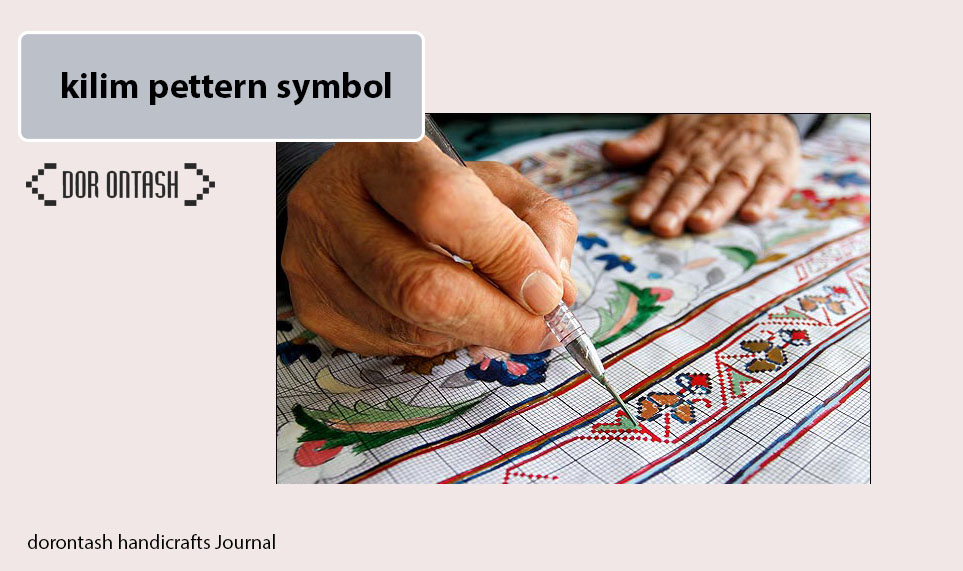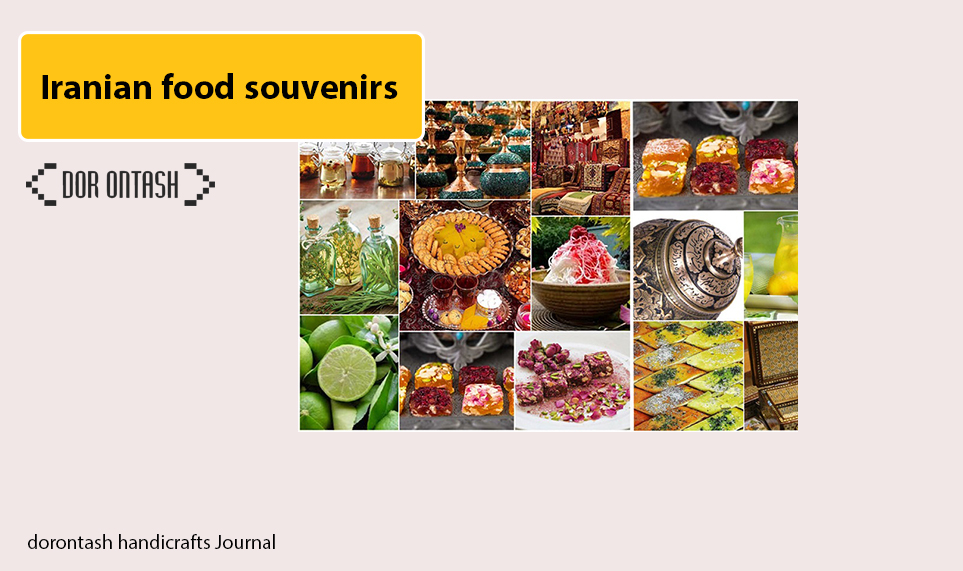One of the most important equipment and goods that has been of special importance in human life since the past is carpets and textile products; Because the use of these devices helps in creating a sense of comfort and peace in humans. One of the most unique and popular types of Iranian handicrafts is the hand-woven carpet, which is one of the ancient products of Iran.. Here, the question that may arise for buyers is, what is a handmade carpet? Be careful that the word “carpet” is an Arabic phrase that has a broad meaning and refers to items such as carpets and rugs. As a result, we can say that the meaning of hand-woven carpet is an underlay that is woven by hand from warp and weft, which naturally creates very beautiful designs on it and has many fans all over the world.
Iranian handmade persian carpets video
Types of Iranian handwoven carpets
There are different types of Iranian hand-woven carpets in different designs. The hand-woven carpets of the cities of Isfahan, Kerman and Tabriz, among other cities, have always been popular, which include:






Kashan handwoven carpet
Know that the weaving of carpets and the art of Iranian weavers are done with more precision and artistry in some cities of Iran. The art of weaving carpet weavers in some cities has become more famous due to the elegance and beauty of their work and accuracy. One of the most popular carpets among Iranians is the hand-woven Kashan carpet. This carpet is known in Iran and the world and is sold in various designs and colors. The immense beauty and unique quality of Kashan handwoven carpets has made the buying and selling of customers flourish. The city of Kashan was one of the most luxurious centers for the production of hand-woven carpets during the Safavid period, which made Kashan hand-woven carpets first class.
Tabriz handwoven carpet | persian carpets
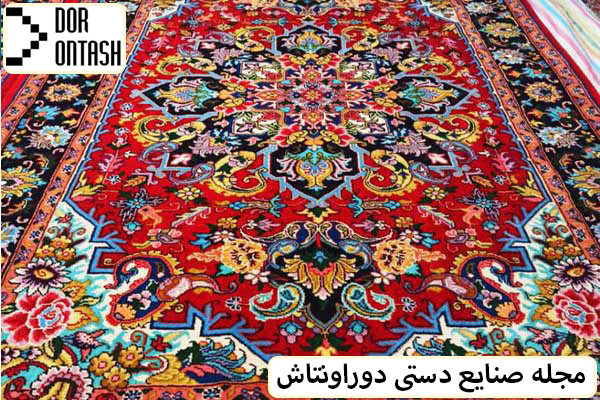 Another famous city in Iran that is known for producing hand-woven persian carpets and has countless fans is the beautiful city of Tabriz. The artist weaving house of this city weaves carpets in special designs and colors. The elegance that exists in this type of carpet can be seen in the smallest hand-woven carpet. And since the distant past, the city of Tabrir has been the cradle of production and distribution of all kinds of hand-woven carpets in various designs and models. The hand-woven carpet of Tabriz is one of the most special and best results of handicrafts and handicrafts in Iran and the world. The art of carpet weaving in Tabriz dates back to the Safavid period. This art was first started in the villages by male and female weavers, which is in the form of a knot with a hook and is symmetrical, which is unique in its kind, and it gradually turned into large carpet workshops to the point where this carpet was exported to the whole world. they do.
Another famous city in Iran that is known for producing hand-woven persian carpets and has countless fans is the beautiful city of Tabriz. The artist weaving house of this city weaves carpets in special designs and colors. The elegance that exists in this type of carpet can be seen in the smallest hand-woven carpet. And since the distant past, the city of Tabrir has been the cradle of production and distribution of all kinds of hand-woven carpets in various designs and models. The hand-woven carpet of Tabriz is one of the most special and best results of handicrafts and handicrafts in Iran and the world. The art of carpet weaving in Tabriz dates back to the Safavid period. This art was first started in the villages by male and female weavers, which is in the form of a knot with a hook and is symmetrical, which is unique in its kind, and it gradually turned into large carpet workshops to the point where this carpet was exported to the whole world. they do.
Isfahan handmade carpet | persian carpets
The art-loving and artistic city of Isfahan, in addition to its arts in the fields of copper and enamel work and inlay work, also has something to say in the field of persian carpets. There are many artists and weavers in this city who weave carpets and produce carpets with delicate and beautiful designs.
Qom handwoven carpet | persian carpets
The city of Qom also has something to say about the art of carpet weaving. Qom handmade carpets have special colors with various designs.
Nayin handwoven carpet | persian carpets
Another city that is skilled in weaving hand-woven carpets is the city of Nayin. The art of carpet weaving in this city is done in a professional and special way, just like in Isfahan and Tabriz.
Types of Iranian handmade carpets in terms of size
The sizes of Iranian handwoven carpets are usually 6 meters, 9 meters, 12 meters and 24 meters, which size is chosen according to the space of the environment.
- Carpets that are 3×2 meters, 2.5×3.5 meters, 3×4 meters and 6×4 meters are known as carpets.
- Rugs are carpets whose area is less than 4 square meters and often have sizes including 2.20 x 1.40 meters and 2.5 x 1.5 meters.
- Carpets that are less wide than carpets in terms of width and are less than 4 meters in length or length, are known as kellagi and are often woven in sizes of 3 x 1.7 meters and 3.7 x 2 meters.
- There are also some carpets whose width varies from 0.5 meters to 1.70 meters and their length varies from 3 to 10 meters and in some cases they are woven up to 15 meters and more. These carpets are used in corridors and staircases and are known as kanara.
- Carpets whose dimensions are 1.40 x 1.5 and 1.60 x 1.10 are known as Zare and Nim.
- Also, the carpets, which are usually 1.30 x 0.80 meters in size, are called Zara and Chak.
- There are also some carpets whose area is less than one square meter. These rugs are known as Pashti, which usually have a size of 90 x 60 cm.
- Padris are also small carpets that are woven in the size of a foot.
Types of Iranian handwoven carpets in terms of material
Handwoven carpets have various sizes, materials, colors and even differences in appearance and structure and are produced in different ways. This issue has caused Iranian hand-woven carpets to have different types and each of them is known by a specific name.
In terms of the type and materials used in the production of handwoven carpets, these carpets can be divided into 5 categories:
- Handwoven woolen carpets whose warp and weft is made of cotton and their pile is wool. Of course, wool is used instead of cotton to produce these carpets in the nomads and Eilat.
- All-silk hand-woven carpets whose piles are made of pure silk.
- Handwoven silk flower carpets, where silk is used in the patterns and edges of these carpets instead of wool, and often the pile of these carpets is also made of silk.
- Handwoven silk floor carpets, in the context of these carpets, silk piles are used instead of wool piles.
- Sof hand-woven carpets are made of thick and thin fabric and the pattern of flowers and bushes is fluffy.
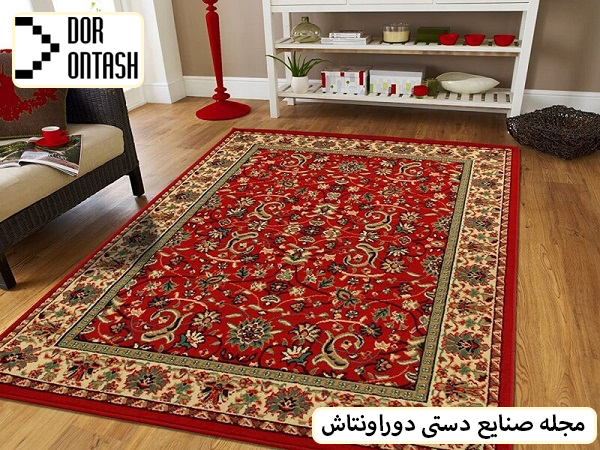 Types of persian carpets in terms of local style
Types of persian carpets in terms of local style
Iranian hand-woven carpets have different types in terms of local style and are divided into three types: urban, rural and nomadic.
- Urban carpets: There are carpets that are woven in cities by urban weavers. These carpets are delicate and their number is high. They also have special and attractive maps and designs.
- Rural carpets are woven in a simple and basic way. These carpets are often woven mentally without a plan and most of their designs are attractive and beautiful.
- Nomadic carpets are simple and basic like rural carpets. The role of these carpets is often taken from the environment and life of the tribal people. Nomadic or Ili carpets are available in small sizes and coarse and coarse texture. Their sides also have a special and complex texture, which are often connected with short woolen tassels at certain intervals.
Types of Iranian hand-woven carpets in terms of weaving methods
In terms of the way of weaving and the way the weft is placed, there are different types of Iranian handwoven carpets and they are divided into three different types:
- Full-length carpets, the arc of the knot behind these carpets is 90 degrees, and the grooves behind them are deep. Also, in these carpets, the threads are not far from each other and their texture is very strong.
- In Lule carpets, the threads are spaced as far as one thread diameter. The flat texture of these carpets is a plant and they are woven in a rattan style. In other words, in the weave of these carpets, in each row, the thread is turned upside down and the threads are visible from the back of the carpet.
- Half-roll carpets are another type of Iranian hand-woven carpets in terms of weaving method, in which the arc of the knot on the back of the carpet is 45 degrees.
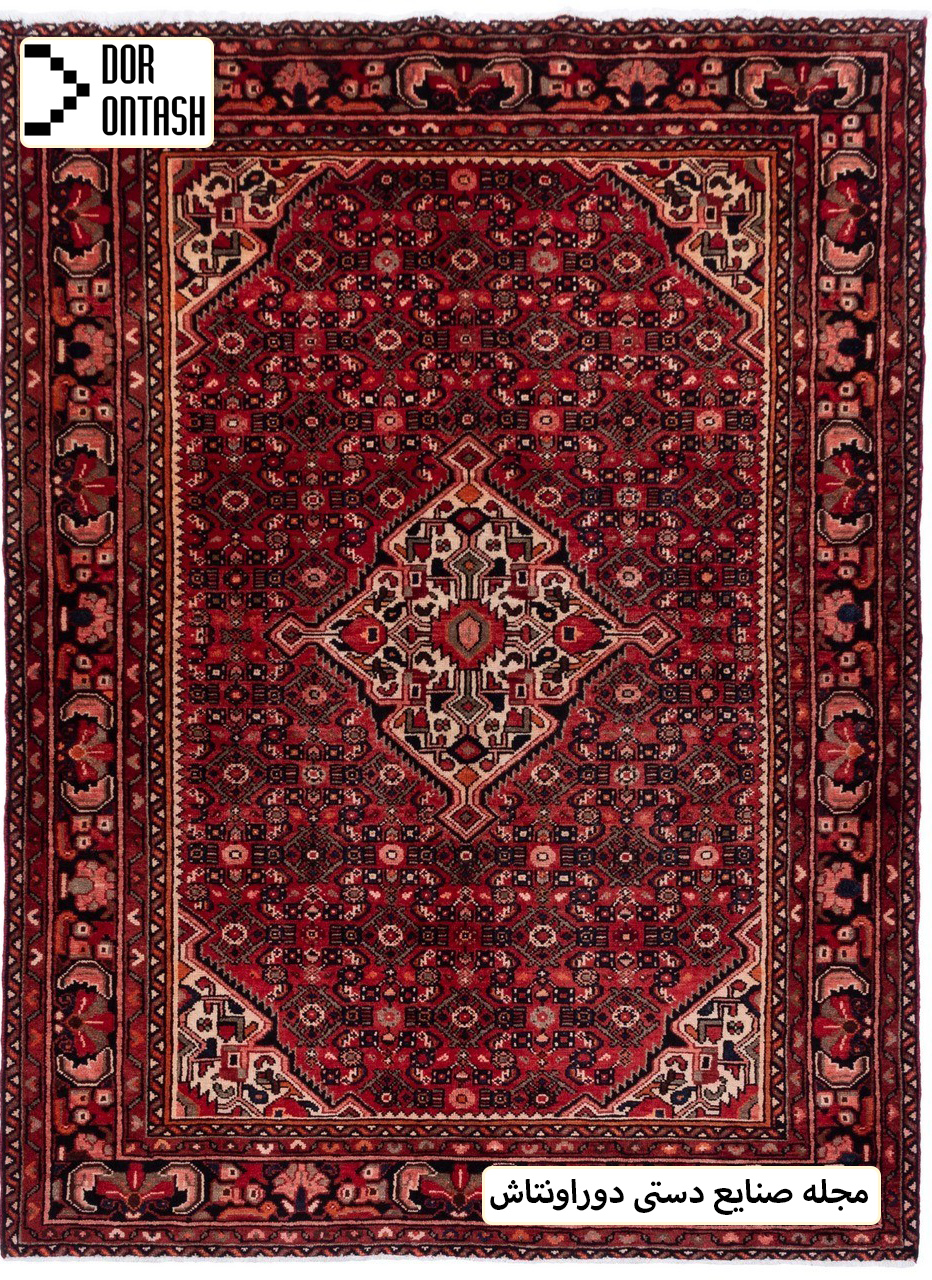 Which city has the best hand-woven carpet?
Which city has the best hand-woven carpet?
All Iranian hand-woven carpets are beautiful, high-quality and attractive, but the products of some cities have reached world fame in terms of texture quality, design style and carpet material. We will get to know them in the following:
Tabriz handwoven carpets
The city of Tabriz is one of the hubs of hand-woven carpet production in Iran, whose products are famous for their attractive designs and colors. The variety of designs and colors of hand-woven Tabriz carpets is so high that it may make it difficult for you to choose. These carpets are woven in Salari, Haris, Mahi, Alia, Nami, Gonbad, Golestan and Khatibi designs.
Handwoven nomadic carpets
Handwoven nomadic carpets are the art of women of the Baloch, Shahson and Bakhtiari tribes and have various designs and attractive colors. The distinguishing feature of these carpets compared to other hand-woven Iranian carpets is the attractive, creative and completely subjective designs of the carpets, which fascinates every viewer. Shahson carpets, Lori carpets, Qashqai carpets, Bakhtiari carpets and Afshari carpets can be considered as the most important nomadic carpets.
· Kashan handwoven carpet
These carpets are considered one of the most popular domestic and export handwoven carpets due to their beautiful design and excellent quality. The variety of designs and colors of Kashan handwoven carpets are inspired by nature and even their fibers have a natural color.
· Turkmen handwoven carpet
If you are fond of large patterns, happy colors and abstract designs, be sure to visit Turkmen hand-woven carpets. These carpets have attractive designs and reasonable prices.
Maragheh handmade carpet
The city of Maragheh has a long history in weaving handwoven carpets and is the second center for the production of all silk handwoven carpets in the country after Qom. These carpets are fine-textured and elegant, and due to the very high precision of the texture and the use of raw materials and high-quality fibers, they are equal to the quality of Qom carpets. Maragheh silk carpets are woven from 100% pure silk, and their design and delicate piles are very clear and shiny.
Qom silk carpet
Qom silk carpets are extremely eye-catching and beautiful. If you are looking for a special and original silk carpet, choose Qom silk carpet. These carpets are woven from pure silk and their designs are taken from celebrities and historical stories.
Qom silk carpets have a variety of colors and attractive designs and are exported to European countries. These carpets are finely woven, have short piles, high texture density, and the quality of raw materials are very high, and they are considered among the most popular silk carpets in the world.
Characteristics of Iranian hand-woven carpets
Iranian hand-woven carpets are woven in 3 forms: tanraj, khasti and afshan, the most popular type of which is the tanraj pattern. One of the indicators of the beauty of a hand-woven carpet is the symmetry in the colors used in the texture. The more the handwoven carpet has, the more valuable and expensive it becomes, the pile of these carpets must be shiny and flexible. Be very careful when buying due to the wide variety of handwoven carpets.
 Design and pattern of handmade carpet
Design and pattern of handmade carpet
The thing that makes a carpet to be of high quality and elegance is its design and pattern, and more important than the type of weaving done by the weaver is the precision of the weaver in choosing the correct and precise colors and the type of texture that is not too much. It should be firm and not too loose, one hand and beautiful. Designs and motifs in Iranian carpets include:
Types of handmade carpet design


















Handmade carpets abroad
Iranian handwoven carpets are exported to about 80 to 100 countries, the beauty of Iranian carpets has made them popular all over the world. Of course, the price of this type of carpet is high and it is considered as a luxury product, that is why it is mostly seen in luxurious homes in Iran and abroad. Among the most important countries that export Iranian handwoven carpets are the United Arab Emirates, Lebanon, Italy, Pakistan, Germany and France.
European and Asian countries account for the largest share in the purchase of Iranian handwoven carpets. The export of carpets continues even despite the funerals because most of its raw materials are available in the country itself.
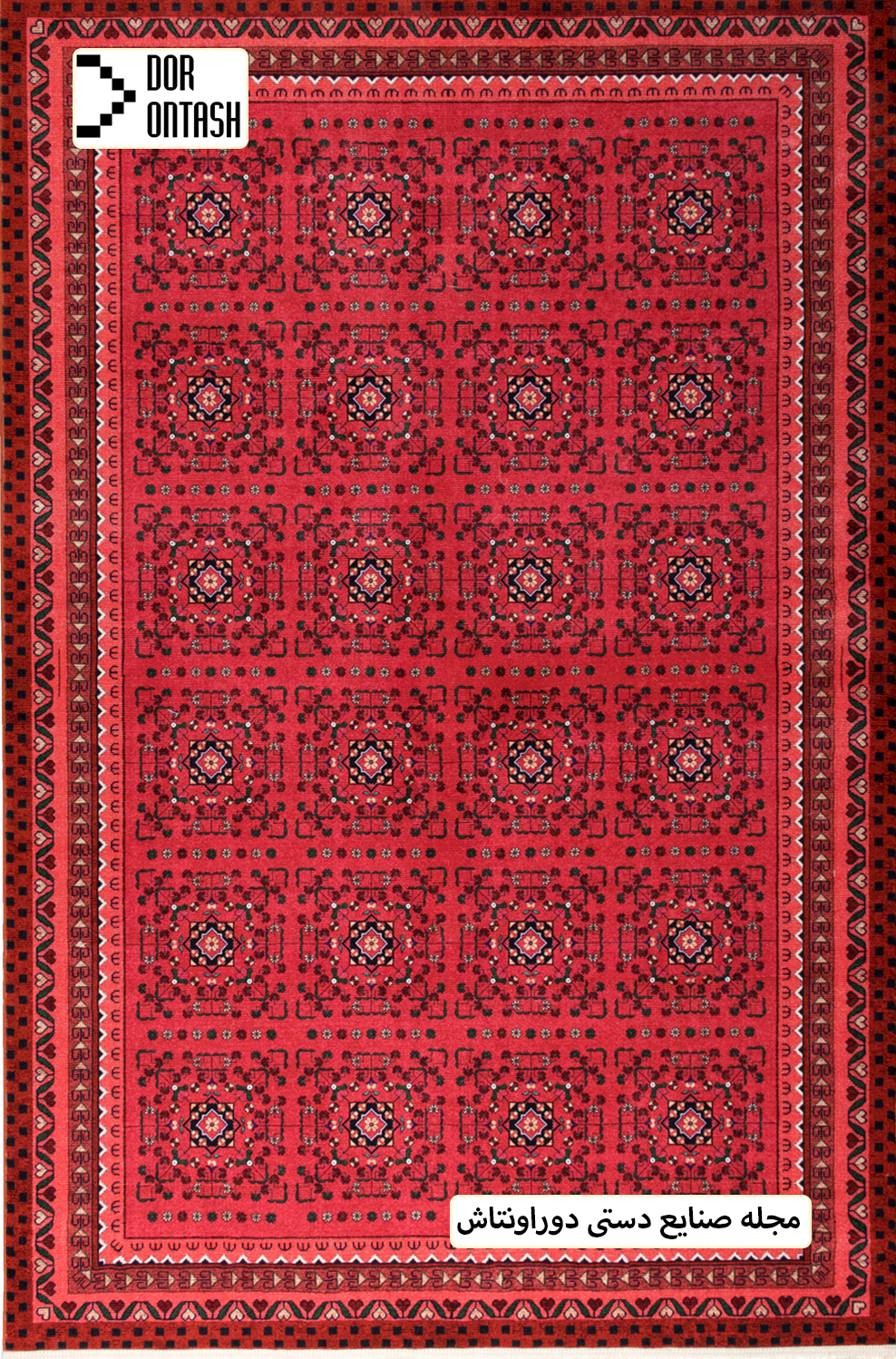
Handwoven carpet in Iran

Iranian home decoration requires the selection of hand-woven Iranian carpets according to designs suitable to the people’s culture. So that if a person wants to have a beautiful and at the same time luxurious decoration, he can create a unique and stylish space by matching the design of handwoven carpets with other components of his home. However, due to the fact that currently the producers of this product have tried to launch many different types of hand-woven carpets in various designs and colors, it can be said that dear customers can choose and buy a type of this product according to their needs and tastes. and use it at home.
However, be careful that buying Iranian hand-woven carpets from famous brands can help the customer to get a unique product at a reasonable price, and if you buy products from these brands, you will definitely use the carpets for many years.
History of handmade carpet
According to the ancient history of the production of Iranian hand-woven carpets and rugs, it can be said that the products woven by Iranian artists are among the best and most beautiful types of carpets in the world, which has been confirmed by international carpet experts. But despite the fact that the first knotted carpets were used as horse covers or in desert dwellers’ tents in 1328, researchers believe that the beginning of the flourishing of the art of carpet weaving in Iran dates back to the 16th and 17th centuries. AD returns.
In the past years, with the advancement of technology in many fields, including the field of carpet production, we witnessed huge changes in the production of this product; So that at the beginning of the production of carpets by Iranian artists, very simple patterns and easy designs were applied on these textile products, but with the passage of time, there was a tremendous transformation in the production of this product and this caused a unique variety in the market of handwoven carpets.
Historical handwoven carpets
Among the important hand-woven carpets in the history of Iran, the following carpets and rugs can be mentioned:

- Pazyrik carpet: This carpet is 2500 years old and it measures 210 x 183 cm and is woven with about 3600 knots.
- Baharistan carpet: known as Bahar Khosrow carpet, which is an excellent carpet during the time of Khosrow Parviz.
- Safavid era hand-woven carpet: It is one of the most beautiful Iranian hand-woven carpets, which shows the creativity and genius of artists during the Safavid era. During this period, carpet weavers left about 1,500 carpets and rugs using designs.
- Taranj carpet with animal scene: It is another Iranian carpet with a red background and beautiful designs, produced from silk, which has made it very popular.
- Chelsea carpet: Another beautiful carpet in the world is the Chelsea carpet, which is kept in the carpet collection of the Victoria and Albert Museum in London.
The price of handmade carpet
As you know, the price of handmade carpet is very high and various factors affect its price. The more valuable this product is, the more expensive it will be. One of the most important factors that determine the price of a carpet is the density of the carpet. The higher the density, the higher the price. Handwoven carpets are available in different designs and roles in the market. Be careful that the product is the third grade in the market. Do not introduce the first-class format to you. The silk thread that is used to weave the carpet has a direct effect on the price of the carpet, because the silk thread is thin, the weaver has to use it with difficulty, and also in the term of weaving, due to the thinness of the carpet thread, it is woven more slowly. More is needed and the silk thread itself is very expensive, as a result, the carpet with silk thread is very expensive.


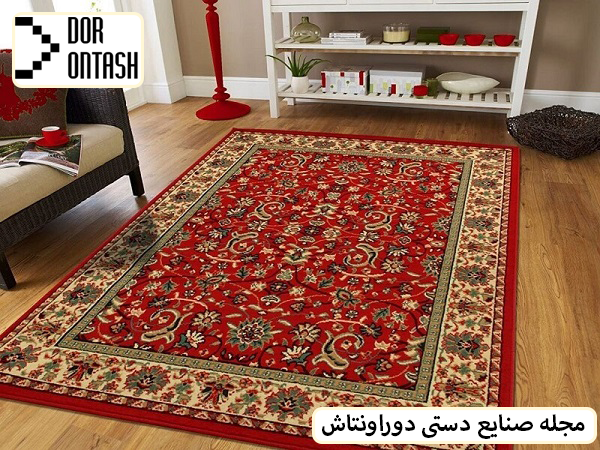 Types of persian carpets in terms of local style
Types of persian carpets in terms of local style Which city has the best hand-woven carpet?
Which city has the best hand-woven carpet?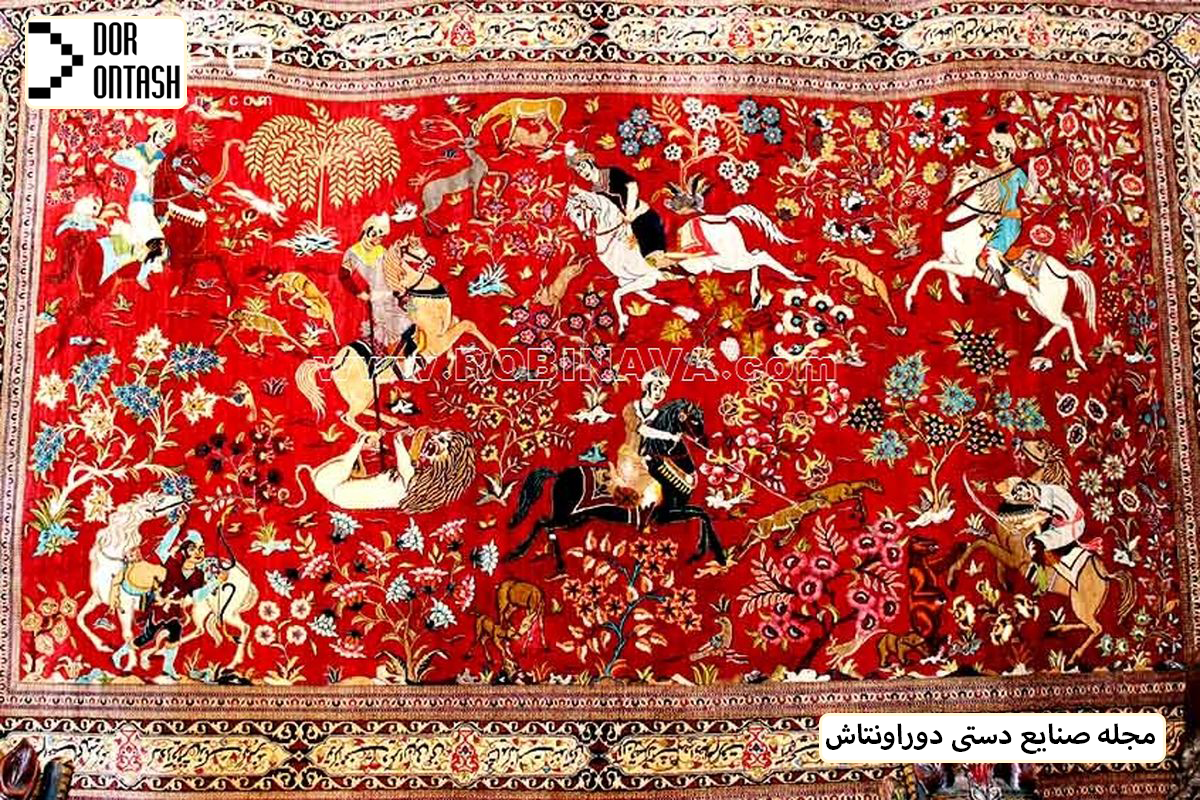 Design and pattern of handmade carpet
Design and pattern of handmade carpet